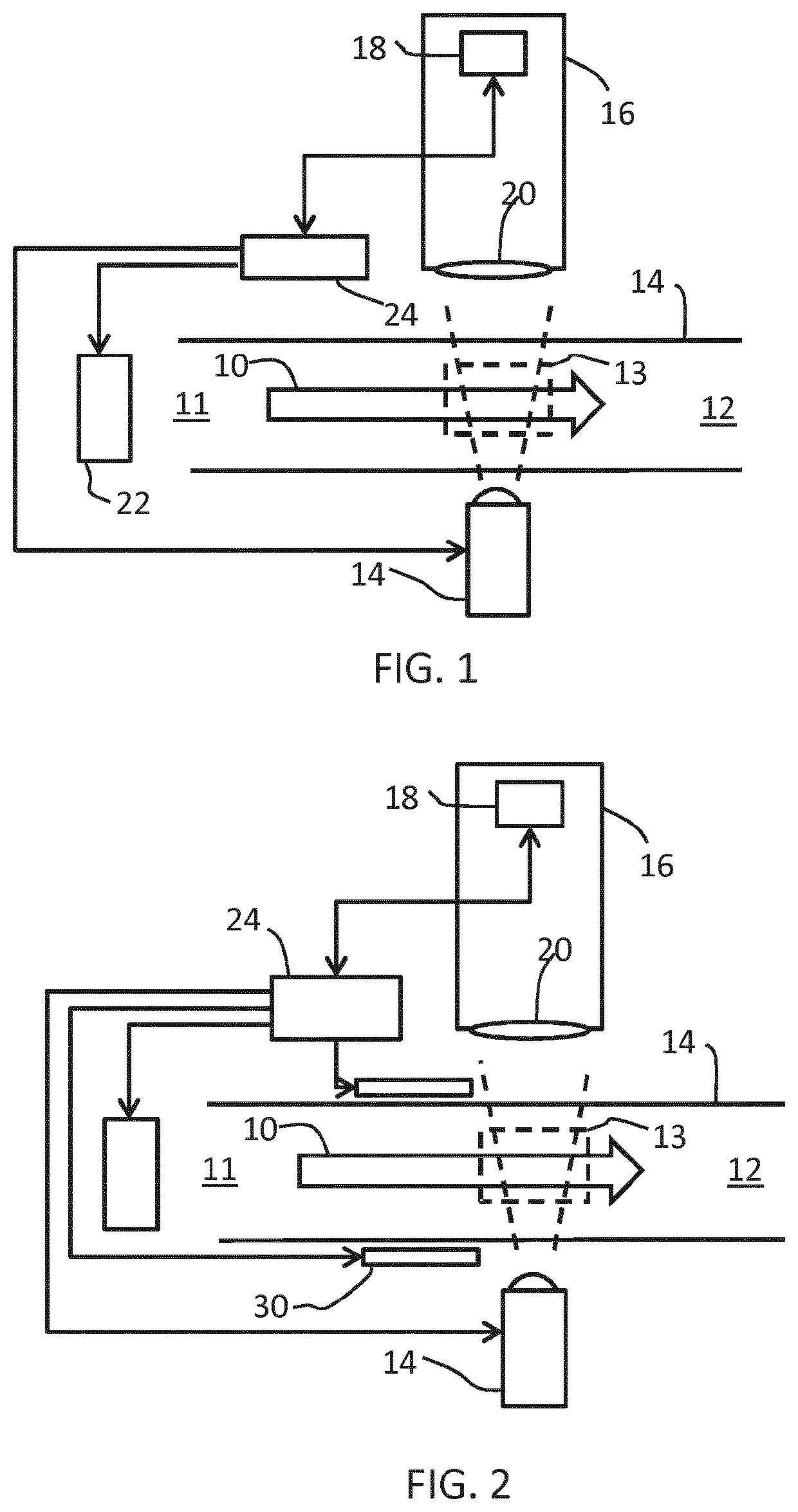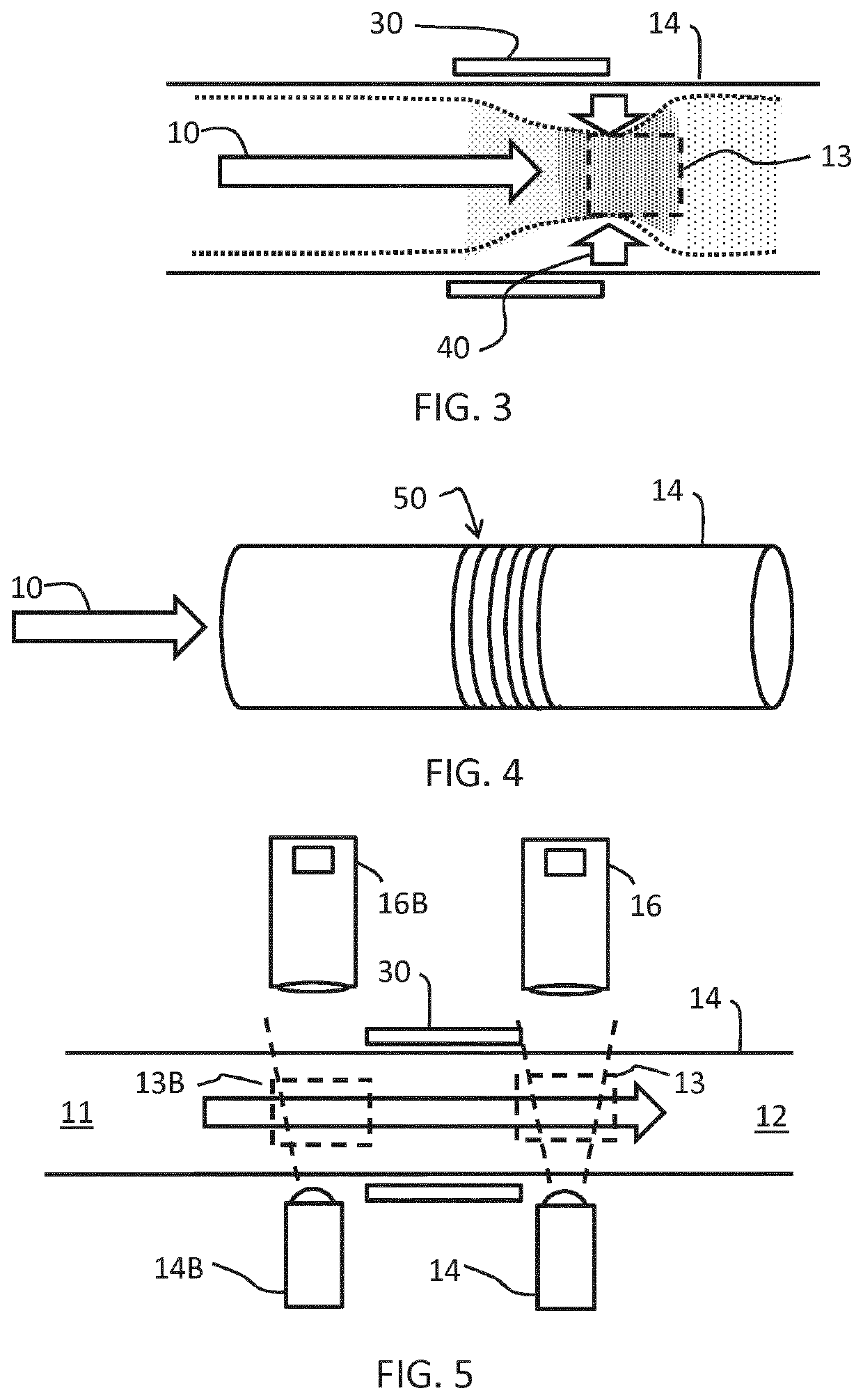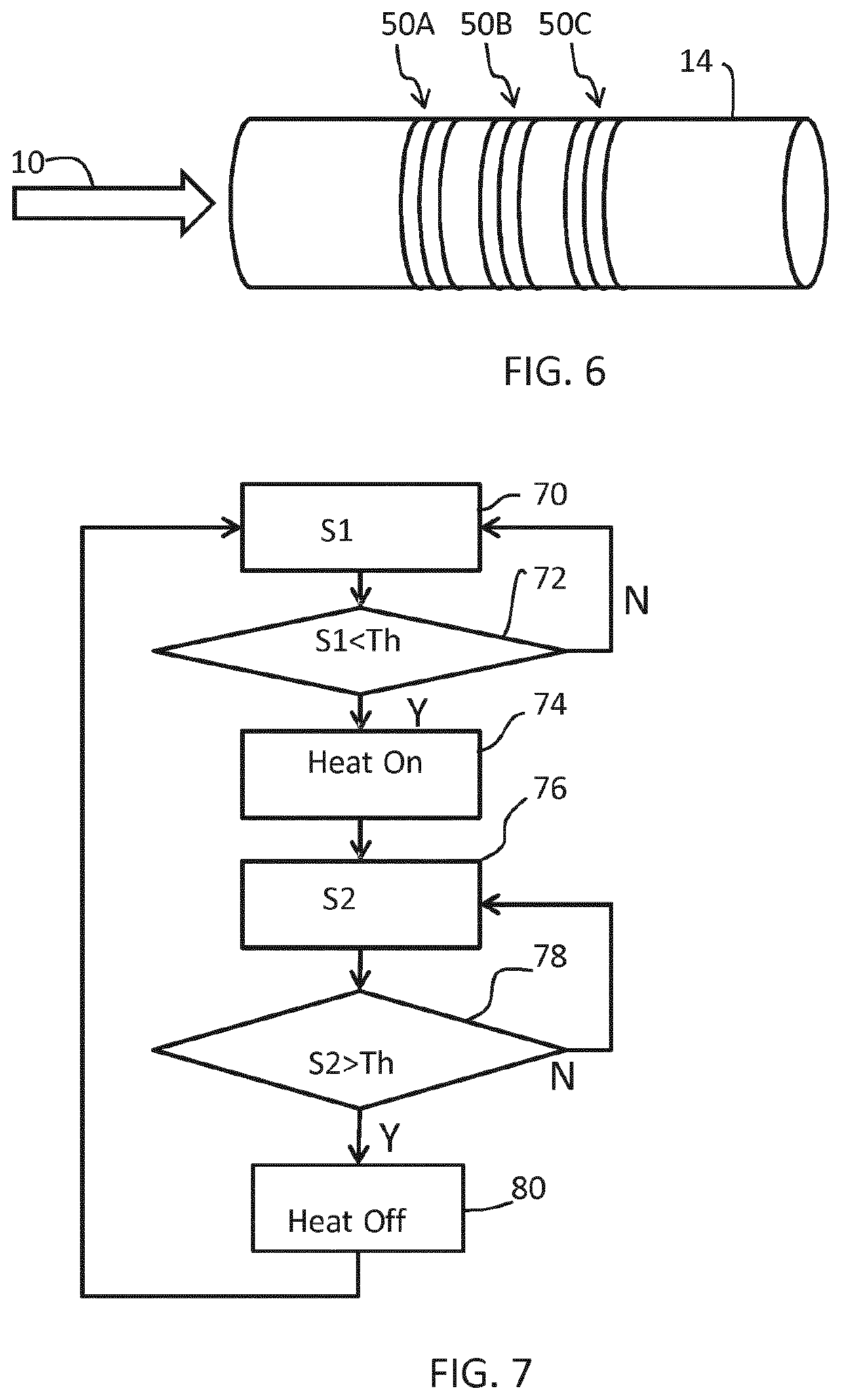Particle sensor and particle sensing method
a particle sensor and particle technology, applied in the field of sensors, can solve the problems of excessive pm2.5 pollution, long user wait time, and relatively low readings, and achieve the effect of stable readings and no adverse effects on the flow through the sensor
- Summary
- Abstract
- Description
- Claims
- Application Information
AI Technical Summary
Benefits of technology
Problems solved by technology
Method used
Image
Examples
Embodiment Construction
[0057]The invention provides a particle sensing system for sensing particles entrained in a fluid. The system comprises a flow channel having a longitudinal direction along which the fluid is to be passed, a heating arrangement for heating the fluid and thereby applying a positive thermophoretic force on the fluid in a direction perpendicular to the longitudinal direction of the flow channel and a sensor for sensing the particles in the fluid after heating by the heating arrangement. The sensor has a detection volume, and the thermophoretic effect is used to increase the particle concentration in the detection volume.
[0058]The use of thermophoresis is known for inducing particles in air to deposit on the surface of a mass sensor. For example reference is made to I. Paprotny, F. Doering, P. A. Solomon, R. M. White, and L. A. Gundel, “Microfabricated air-microfluidic sensor for personal monitoring of airborne particulate matter”: Design, fabrication, and experimental results, Sensors ...
PUM
| Property | Measurement | Unit |
|---|---|---|
| diameter | aaaaa | aaaaa |
| concentrations | aaaaa | aaaaa |
| concentrations | aaaaa | aaaaa |
Abstract
Description
Claims
Application Information
 Login to View More
Login to View More - R&D
- Intellectual Property
- Life Sciences
- Materials
- Tech Scout
- Unparalleled Data Quality
- Higher Quality Content
- 60% Fewer Hallucinations
Browse by: Latest US Patents, China's latest patents, Technical Efficacy Thesaurus, Application Domain, Technology Topic, Popular Technical Reports.
© 2025 PatSnap. All rights reserved.Legal|Privacy policy|Modern Slavery Act Transparency Statement|Sitemap|About US| Contact US: help@patsnap.com



